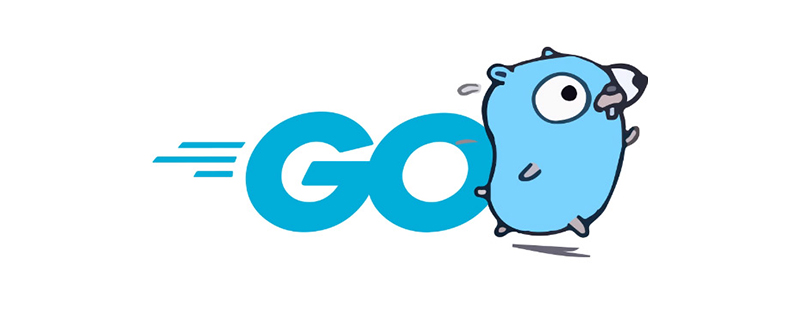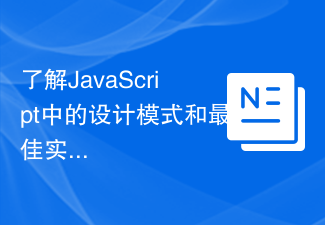Twelve design patterns of PHP
Design basis of PSR-0 specification1. Use namespaces for everything
2. All php files must be loaded automatically without include/require
spl_autoload_register
3.Single entrance mode
1. Three basic design patterns
Factory mode
Use a factory method to replace a new
class Factory{
static function createDatabase(){
$db = new Database;
return $db;
}
}
When using it, you can use $db = Factory::createDatabase();
Singleton pattern
class Database{
private $db;
private function __construct(){
//Here you can write to connect to the database
}
static function getInstance(){
if(self::$db){
return self::$db;
}else{
self::$db=new self()
return self::$db;//private can call itself
}
}
function where(){
}
}
If it is a factory plus singleton mode
class Factory{
static function createDatabase(){
$db = Database::getInstance();
return $db;
}
}
Registrar (tree) mode
class Register{
protected static $object;
static function set($alias,$object){
self::$object[$alias]=$object;
}
static function get($name)
{
return self::$object[$name];
}
function _unset($alias){
unset(self::$object[$alias]);
}
}
Combined with factory methods
class Factory{
static function createDatabase(){
$db = Database::getInstance();
Register::set('db1',$db);
return $db;
}
}
Index calls directly
$db = Register::get('db1');
Adapter Pattern
1. Adapter mode can encapsulate completely different functional interfaces into a unified API
2. Practical application examples, PHP database operations include mysql, mysqli, and pdo. You can use the adapter mode
Unify into consistency, similar scenarios include cache adapters, which unify different cache functions such as memcache, redis, file, apc, etc. into consistency,
For example, there is an interface in Database.php
interface IDatabase
{
function connect($host,$user,$pwd,$dbname);
function query($sql);
function close();
}
There are three categories below
class mysql implements IDatabase{
private $con;
function connect($host,$user,$pwd,$dbname){
$this->con = mysql_connect($host,$user,$pwd);
mysql_select_db($dbname,$this->con);
}
function query($sql){
return mysql_query($sql,$this->con);
}
function close(){
return mysql_close($this->con);
}
}
class mysqli implements IDatabase{
protected $con;
function connect($host,$user,$pwd,$dbname)
{
$this->con = mysqli_connect($host,$user,$pwd,$dbname);
}
function query($sql)
{
return mysqli_query($this->con,$sql);
}
function close()
{
return mysqli_close($this->con);
}
}
class PDO implements IDatabase{
protected $con;
function connect($host,$user,$pwd.$dbname)
{
$con = new PDO("mysql:host=$host;dbname=$dbname",$user,$pwd);
$this->con=$con;
}
function query($sql){
return $this->con->query($sql);
}
function close(){
unset($this->con);
}
}
In this way when we call
$db = new mysql(); or new mysqli(); or new PDO();
$db->connect('127.0.0.1','root','root');
$db->query();
$db->close();
Strategy Mode
Encapsulate a specific set of behaviors and algorithms into classes to adapt to certain specific contexts. This pattern is the strategy pattern
Practical application distance, if an e-commerce website system requires male and female users to jump to different product categories
First declare a strategy interface file
interface UserStrategy{
function showAd();
function showcategory();
}
//The first strategy is for female users
class femaleUserStrategy implements UserStrategy{
function showAd(){
echo '2014 new women's clothing';
}
function showCategory()
{
echo 'women's clothing';
}
}
//The second strategy is for male users
class maleUserStrategy implements UserStrategy{
function showAd(){
echo '2014 new men's clothing';
}
function showCategory()
{
echo 'men's clothing';
}
}
//If there is a page class
class page{
protected $strategy;
function index(){
$this->strategy->showAd();
$this->strategy->showCategory();
}
function setStrategy(UserStrategt $strategy){
$this->strategy=$strategy;
}
}
$page = new Page();
if(isset($_GET['female'])){
$strategy = new femaleUserStrategy();
}else{
$strategy = new maleUserStrategy();
}
$page->setStrategy($strategy);
$page->index();
From a hard-coded to decoupled pattern
Data Object Mapping Pattern
The data object mapping mode maps objects and data storage to a
Object operations are mapped to operations on the data store.
To implement the data object mapping mode in code, we will implement an ORM class to map complex SQL statements into object attribute operations
class User{
public $id;
public $name;
public $mobile;
public $regtime;
protected $db;
function __construct($id){
//Get data first
$this->db = new mysql();
$this->db->connect('xxxxx'xxxx);
$res = $this->db->query('select * from XXX where id = {$id}');
$data = $res->fetch_assoc();
$this->id=$data['id'];
$this->name=$data['name'];
$this->mobile=$data['mobile'];
$this->regtime=$data['regtime'];
return $res;
}
function __destruct(){
//Can be used as a modification
$this->db->query('update xx set name={$this->name} mobile={$this->mobile}XXXXX where id = {$this->id}');
}
}
$user = new User(1);//1 corresponds to the id in the database being one
$user->mobile = '155555555';
$user->name='test';
$user->regtime=time();
//There are no sql statements here. Only operations on objects
Comprehensive application (factory mode, registrar mode, adapter mode)
with
Observer Mode
1. Observer pattern, when the state of an object changes, all objects that depend on it will receive notifications and automatically update.
2. Scenario: After an event occurs, a series of update operations need to be performed. The traditional programming method is
The processing logic is added directly after the event code. When the updated logic increases, the code will become difficult to maintain. This method is coupled and intrusive,
Adding heart logic requires modifying the code of the event body
3. The observer pattern implements a low-coupling, non-intrusive notification update mechanism.
demo
class Event{
function trigger(){
echo "Event";//Indicates that an event occurred
//Start writing update logic
echo 'logical 1';
echo 'Logic 2';
echo 'logic 3';
}
}
$event = new Event();//The traditional method is coupled and intrusive,
//The source code must be changed, so we define an observer pattern
demo
//Here comes an interface
//First come a base abstract class
abstract class EventGenerator{
private $observers = array();
function addObserver(Observer$observer){
$this->obervers[]=$oberver;
}
function notify(){
foreach($this->obervers as $observer)
{
$observer->updata();
}
}
}
interface Oberver{
function update($event_info = null);
}
//So at this time we need the Event class to inherit this base class
class Event extends EventGenerator{
function trigger(){
echo "Event";//Indicates that an event occurred
$this->notify();
}
}
class Observer1 implements Observer{
function updata($event_info=null)
{
echo "Logic one";
}
}
class Oberver2 implements Oberver{
function updata($event_info=null)
{
echo "Logic 2";
}
}
Prototype Mode
1. Similar to the factory mode, it is used to create objects
2. Different from the implementation of factory mode, prototype mode first creates a prototype
Object, and then create a new object by cloning the prototype object, thus eliminating the need for classes
Repeated initialization operations during creation
3. The prototype mode is suitable for the creation of large objects. Creating a large object requires a lot of overhead. If it is new every time, it will consume a lot of money,
Prototype mode only copies memory.
Suppose there is a canvas class. new is complicated
I want to use him twice more
In this way, we can use prototype mode to solve the problem of new and use clone to replace new
Just clone it directly after initialization.
Decorator Pattern
1. Decorator mode can dynamically add and modify class functions.
2. A class provides a function. If you want to modify and add additional functions, the traditional
In programming mode, you need to write a subclass to inherit it and reimplement the class methods.
3. Using the decorator mode, you only need to add a decorator object at runtime to achieve maximum flexibility
If we have a canvas class. Only one square can be printed, if we want to add a color
Generally, you write a subclass and inherit that canvas class.
Override the method that generates the canvas.So what if we want to add a lot of functions?
Do I need to rewrite many classes?
Next we use the decorator pattern to solve this problem
First, let’s declare a canvas decorator interface
interface DrawDecorator{
function beforeDraw();
function afterDraw();
}
For example, we need to modify the draw() method of the canvas class
So we call
in the draw() method function draw(){
$this->beforeDraw();
//Here is the content of the original code
$this->afterDraw();
}
Then add a protected $decorators[]=array();
in the canvas class Add a method to receive the decorator interface
function addDecorator(DrawDecorator $decorator){
$this->decorators[]=$decorator;
}
Add two more methods to call the decorator
function beforeDraw(){
foreach($this->decorators as $decorator)
{
$decorator->beforeDraw();
}
}
function afterDraw(){
//Reverse, last in first out
$decorators = array_reverse($this->decorators);
foreach($decorators as $decorator)
{
$decorator->afterDraw();
}
}
We have a color decorator
class ColorDrawDecorator implements DrawDecorator{
protected $color;
function __construct($color='red')
{
$this->color= $color;
}
function beforeDraw()
{
echo "
}
function afterDraw()
{
echo "
}
}
There is no need to inherit to implement it here
$a = new canvas();//Instantiate the canvas class
$a -> init();//Initialization
$a -> addDecorator(new colorDrawDecorator('green'));//Add a color decorator class
Iterator Pattern
1. Iterator mode, traverse yige
without knowing the internal implementation Internal elements of aggregate objects
2. Compared with traditional programming patterns, the iterator pattern can hide the operations required to traverse elements
For example, traverse a database and get all objects
class Alluser implements Iterator{
protected $ids;
protected $index;//current position of iterator
protected $data=array();
//Iterator is the iterator interface
function __construct(){
$db = Factory::getDatabase();
$result = $db->query("selecy id from user");
$this->ids = $db->mysql_fetch_assoc($result);
}
function current(){
//Get the current element
$id=$this->ids[$this->index]['id'];
return Factory::getUser($id);
}
function next(){
//Next element
$this->index ++;
}
function valid()
{
//Determine whether there is data
return $this->index ids);
}
function rewind(){
$this->index=0;//The first step to the beginning
}
function key(){
//Get the current index
return $this->index;
}
}
$users = new Alluser();
foreach ($users as $user)
{
var_dump($user);
}
Proxy mode
1. Establish a proxy object (proxy) between the client and the entity. The client delegates all operations on the entity to the proxy object, hiding the specific implementation details of the entity.
Just write a
Basic principles of object-oriented programming
1. Single responsibility: a class only needs to do one thing
2. Open and closed: a class should be extensible but not modifiable
3. Dependency inversion: A class should not be strongly dependent on another class. Each class is replaceable for another class
4. Configuration: Use configuration as much as possible instead of hard coding.
5. Interface-oriented programming: You only need to care about the interface, not the implementation.
Principles of MVC architecture
Let’s first create a new Config object
$config = new Config(__DIR__.'/configs');
$config['controller'];
Then there is a Config class
class Config implements ArrayAccess{
//The ArrayAccess interface is a built-in interface, which means that array values are allowed to be passed. There are four methods to be implemented
protected $path;
protected $configs=array();
function __construct($path)
{
$this->path=$path;
}
function offsetGet($key){
//Get the configuration array file name key
if(empty($this->configs[$key]))
//If the array file name does not exist in the original configuration file, then load it
{
$file_path=$this->path.'/'.$key.'.php';//Generate loading path
$config = require $file_path;
$this->config[$key]=$config;
}
return $this->configs[$key];
}
function offsetSet($key,$value)
{
//Set the key of the array
}
function offsetExists($key)
{ //Check whether the key of the array exists
return isset($this->configs[$key]);
}
function offsetUnset($key)
{ //Delete the key of the array
}
}
Configuration files such as controller.php
$config = array(
'home'=>array(
'decorator'=>array(
'IMoocDectoratorTemplate',
),
),
);
Configuration and Design Patterns
1. Use ArrayAccess in PHP to load configuration files
2. Read the configuration in the factory method and generate a configurable object
3. Use the decorator mode to implement permission verification, template rendering, and json serialization
4. Use the observer pattern to implement a series of update operations for data update events
5. Use proxy mode to implement automatic master-slave switching of the database
 如何在PHP后端功能开发中合理应用设计模式?Aug 07, 2023 am 10:34 AM
如何在PHP后端功能开发中合理应用设计模式?Aug 07, 2023 am 10:34 AM如何在PHP后端功能开发中合理应用设计模式?设计模式是一种经过实践证明的解决特定问题的方案模板,可以用于构建可复用的代码,在开发过程中提高可维护性和可扩展性。在PHP后端功能开发中,合理应用设计模式可以帮助我们更好地组织和管理代码,提高代码质量和开发效率。本文将介绍常用的设计模式,并给出相应的PHP代码示例。单例模式(Singleton)单例模式适用于需要保
 如何通过编写代码来学习和运用 PHP8 的设计模式Sep 12, 2023 pm 02:42 PM
如何通过编写代码来学习和运用 PHP8 的设计模式Sep 12, 2023 pm 02:42 PM如何通过编写代码来学习和运用PHP8的设计模式设计模式是软件开发中常用的解决问题的方法论,它可以提高代码的可扩展性、可维护性和重用性。而PHP8作为最新版的PHP语言,也引入了许多新特性和改进,提供更多的工具和功能来支持设计模式的实现。本文将介绍一些常见的设计模式,并通过编写代码来演示在PHP8中如何运用这些设计模式。让我们开始吧!一、单例模式(Sing
 深入聊聊设计模式利器之“职责链模式”(附go实现流程)Jan 17, 2023 am 11:43 AM
深入聊聊设计模式利器之“职责链模式”(附go实现流程)Jan 17, 2023 am 11:43 AM本篇文章给大家带来了关于golang设计模式的相关知识,其中主要介绍了职责链模式是什么及其作用价值,还有职责链Go代码的具体实现方法,下面一起来看一下,希望对需要的朋友有所帮助。
 Go语言中的ETL的设计模式Jun 01, 2023 pm 09:01 PM
Go语言中的ETL的设计模式Jun 01, 2023 pm 09:01 PM随着数据的增长和复杂性的不断提升,ETL(Extract、Transform、Load)已成为数据处理中的重要环节。而Go语言作为一门高效、轻量的编程语言,越来越受到人们的热捧。本文将介绍Go语言中常用的ETL设计模式,以帮助读者更好地进行数据处理。一、Extractor设计模式Extractor是指从源数据中提取数据的组件,常见的有文件读取、数据库读取、A
 深入解析Go语言中的单例模式Mar 21, 2023 pm 06:36 PM
深入解析Go语言中的单例模式Mar 21, 2023 pm 06:36 PM单例模式是一种常见的设计模式,它在系统中仅允许创建一个实例来控制对某些资源的访问。在 Go 语言中,实现单例模式有多种方式,本篇文章将带你深入掌握 Go 语言中的单例模式实现。
 了解JavaScript中的设计模式和最佳实践Nov 03, 2023 am 08:58 AM
了解JavaScript中的设计模式和最佳实践Nov 03, 2023 am 08:58 AM随着JavaScript的不断发展和应用范围的扩大,越来越多的开发人员开始意识到设计模式和最佳实践的重要性。设计模式是一种被证明在某些情况下有用的软件设计解决方案。而最佳实践则是指在编程过程中,我们可以应用的一些最佳的规范和方法。在本文中,我们将探讨JavaScript中的设计模式和最佳实践,并提供一些具体的代码示例。让我们开始吧!一、JavaScript中
 设计模式的六大原则是什么Jan 06, 2023 pm 04:25 PM
设计模式的六大原则是什么Jan 06, 2023 pm 04:25 PM设计模式的六大原则:1、单一职责原则,其核心就是控制类的粒度大小、将对象解耦、提高其内聚性;2、开闭原则,可以通过“抽象约束、封装变化”来实现;3、里氏替换原则,主要阐述了有关继承的一些原则;4、依赖倒置原则,降低了客户与实现模块之间的耦合;5、接口隔离原则,是为了约束接口、降低类对接口的依赖性;6、迪米特法则,要求限制软件实体之间通信的宽度和深度。
 探索Java开发中的设计模式经验与建议Nov 22, 2023 pm 04:08 PM
探索Java开发中的设计模式经验与建议Nov 22, 2023 pm 04:08 PM探索Java开发中的设计模式经验与建议设计模式是软件开发中用于解决特定问题的一种面向对象的可复用解决方案。在Java开发中,设计模式是很重要的一部分,它能够提高代码的可读性和可维护性,并且能够加速开发过程。通过运用设计模式,开发人员可以更好地组织和管理代码,同时也能够避免一些常见的开发错误。在Java开发中,有很多常用的设计模式,如单例模式、工厂模式、观察者


Hot AI Tools

Undresser.AI Undress
AI-powered app for creating realistic nude photos

AI Clothes Remover
Online AI tool for removing clothes from photos.

Undress AI Tool
Undress images for free

Clothoff.io
AI clothes remover

AI Hentai Generator
Generate AI Hentai for free.

Hot Article

Hot Tools

SublimeText3 Chinese version
Chinese version, very easy to use

WebStorm Mac version
Useful JavaScript development tools

Zend Studio 13.0.1
Powerful PHP integrated development environment

SublimeText3 Linux new version
SublimeText3 Linux latest version

Safe Exam Browser
Safe Exam Browser is a secure browser environment for taking online exams securely. This software turns any computer into a secure workstation. It controls access to any utility and prevents students from using unauthorized resources.







